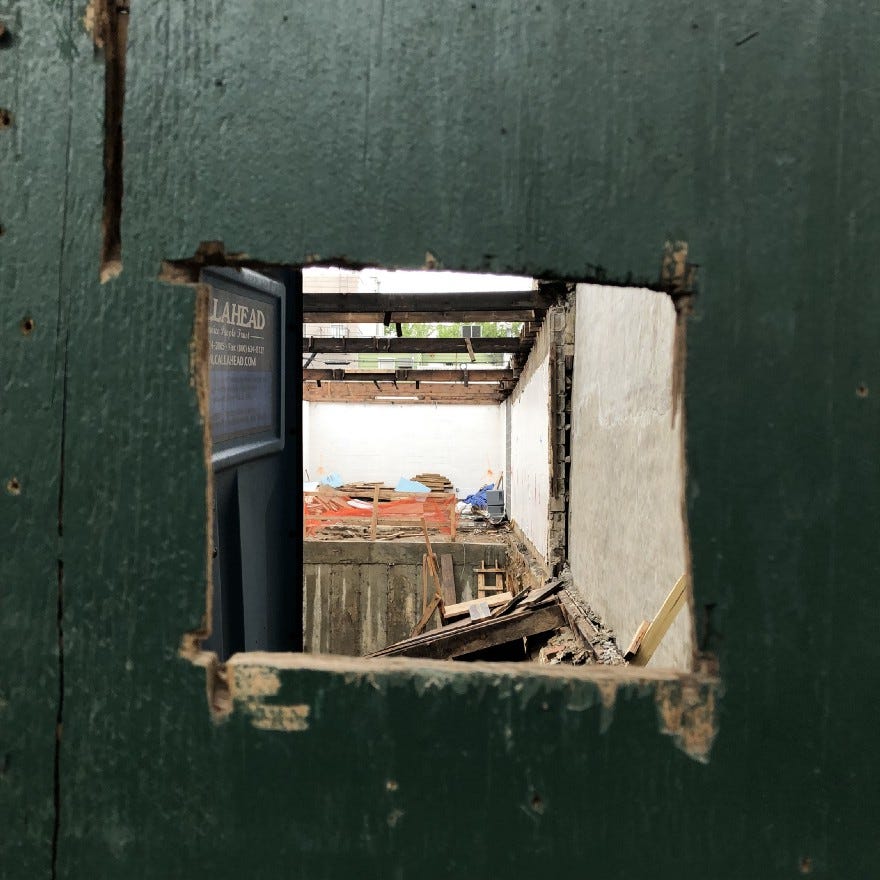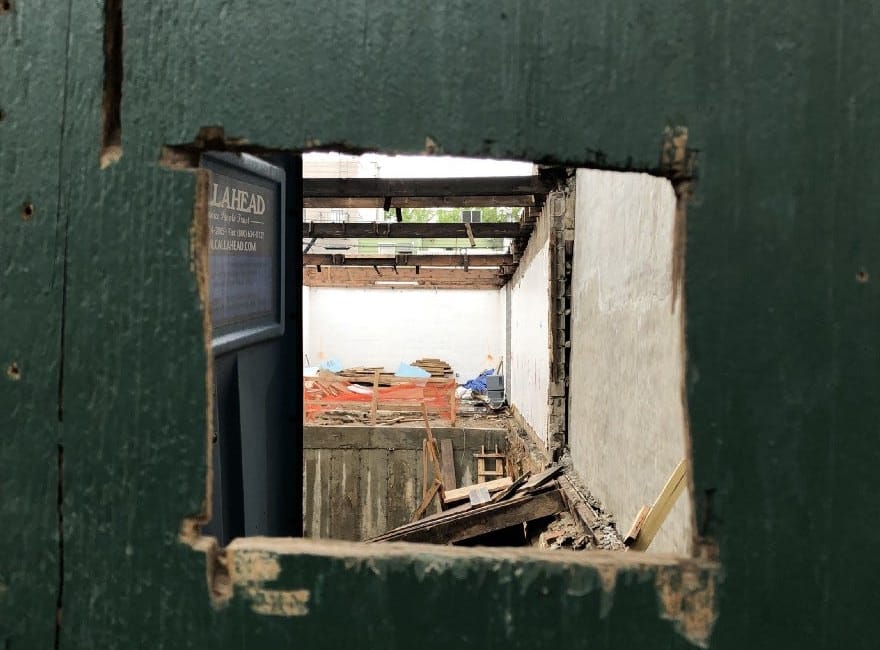
When I was about seven or eight growing up in Los Angeles, I was friends for a time with the granddaughter of Walt Disney. Victoria’s house was so large that I often got lost in it while visiting. I’d find myself in a whole new wing and struggle to find my way back to her.
I believe it was around this same time that I started to have a recurring dream in which I’d find an entirely new room in my house. Architecturally, this dream in no way resembled my actual house — in my jumbled subconscious, this discovery was a strange mash-up of Disney grandiosity and my Grandma Irene’s eclectic wallpaper and overstuffed furniture. Tacky or gorgeous, the interior design of my conjured-up room didn’t hinder the delightful feeling of discovery. This room! How had I missed it when it had been here all along?
The hows and whys of that room never surfaced in the dream — though I did come to discover a hidden room in real life.
We moved into a 1908 Victorian-ish house in San Francisco that was small but contained mysteries. As we unpacked boxes and put stuff away, we discovered weird relics from residents past: nudie postcards from the ’20s tucked behind a mirror; streetcar transfers from 1908 lodged under the front porch; a pair of control-top pantyhose from the 1970s, left in the back of a closet.
On our first night, my husband became obsessed with a wall in the kitchen.
“I think there’s a secret room in here,” he told me. This seemed weird but plausible, especially given my childhood reveries, but I should mention here that we had moved into our house when I was eight and a half months pregnant and just a little bit anxious about keeping things as orderly as possible, given the circumstances. I’m sure I turned to him and said something to him on the order of “Knock a wall out of our kitchen at your peril.”
In a city where homes are currently priced at over $1,000 per square foot, why would someone wall off this much space?
But he really needed to know what was behind the wall, and marriage is all about compromise, right? He drilled a tiny circle, about the size of a cookie, and damn if there wasn’t a room in there. With shelves and a lightswitch that still worked. A tiny space, but still. In a city where homes are currently priced at over $1,000 per square foot, why would someone wall off this much space?
So in this strange way, my dream came true, though in a way that was stolidly pragmatic: this is no room of one’s own à la Virginia Woolf, nor is it a romantic garret. This room now holds our refrigerator and recycling bins. We had been relieved not to find a body in there and disappointed not to have unearthed a suitcase full of cash. And that little hole delivered something before we knocked out the wall: it was a conduit to our curiosity.
You’ll find similar conduits everywhere on the streets of New York City, and not by accident. They have an official function. Mandated by Local Law 47, Subsection 3307.7, they are what are referred to as “viewing panels” on all construction fencing — essentially, tiny cutout holes covered with plexiglass or an “equivalent nonfrangible material.” The law stipulates the size of the panels (12 x 12) as well as the color of the construction fence (hunter green, gray or silver.)
These viewing panels—or, as some refer to them, breathing holes—serve an important civic function too. They provide a window into what is happening in what in the past was a walled-off construction site. This legally required tiny cutout offers passersby a way to keep tabs on the changing landscape of New York City. But it’s not just a matter of facilitating urban voyeurism; these openings make construction sites transparent and ensure that businesses are held to account for any violations. Posted signs on construction sites enable any observer to report anything suspicious by anonymously calling 311, because they’re able to watch what’s happening.
The viewing panel reveals just enough information to keep anxiety in check.
People can monitor the progress of a project but are also given a glimpse of its future, thanks to a subsection of Local Law 47 that requires a panel with a rendering of the proposed building, details on who’s behind the project and other information to give people a sense of what the neighborhood might look like when the project is done.
The viewing panel reveals just enough information to keep anxiety in check. I liken it to your experience at an airport gate as you await your boarding time. If the flight is late and the gate agent is providing clear and consistent information, you’re good, content to sit until further instructed. But if you’re not well informed about flight hiccups, you sit there stewing, inching closer to apoplexy with every minute you’re kept in the dark.
A law like 47 can help keep a city’s residents feel like the calm passenger rather than the irate one. Viewing holes don’t divulge everything about what’s happening behind the wall any more than a patient gate agent does about what’s happening on the runway, but they reveal just enough.
In San Francisco, alas, there is no 47 equivalent. Instead, we’re surrounded by unexplained construction activity, not to mention intractable traffic congestion.This lack of information, I’d argue, feeds on our collective fear of the unknown and manifests in escalating NIMBYism and increasing urban conflict.
A viewing hole might not solve that but could help assuage it. And perhaps feats of construction could engender feelings of awe and intrigue rather than anxiety.







